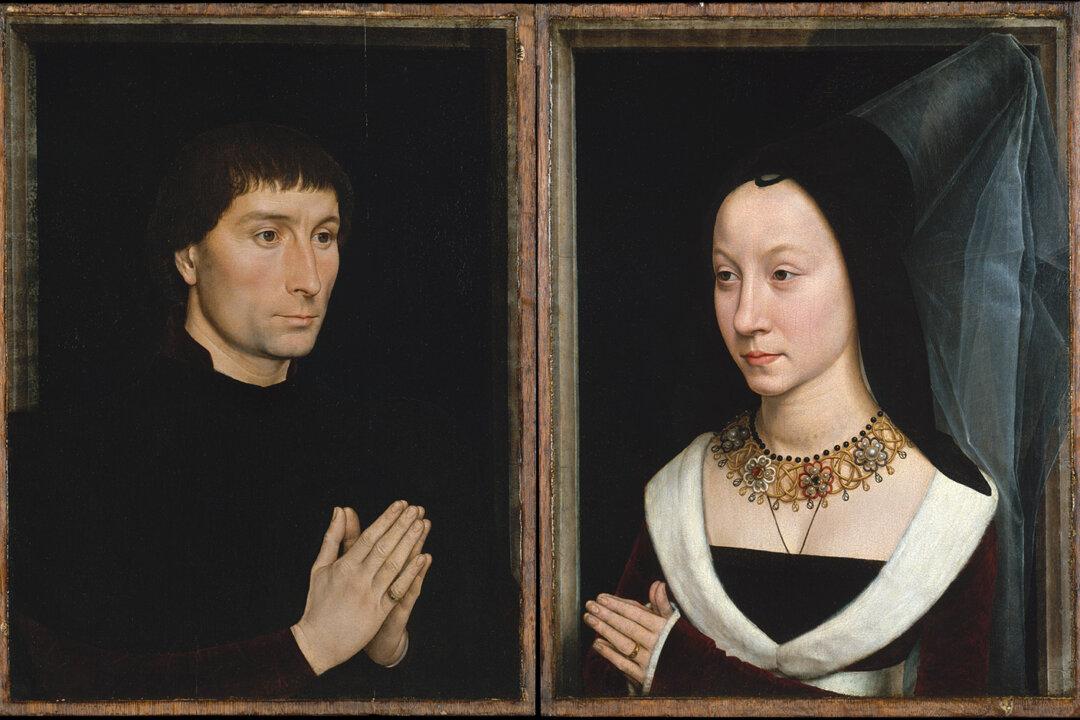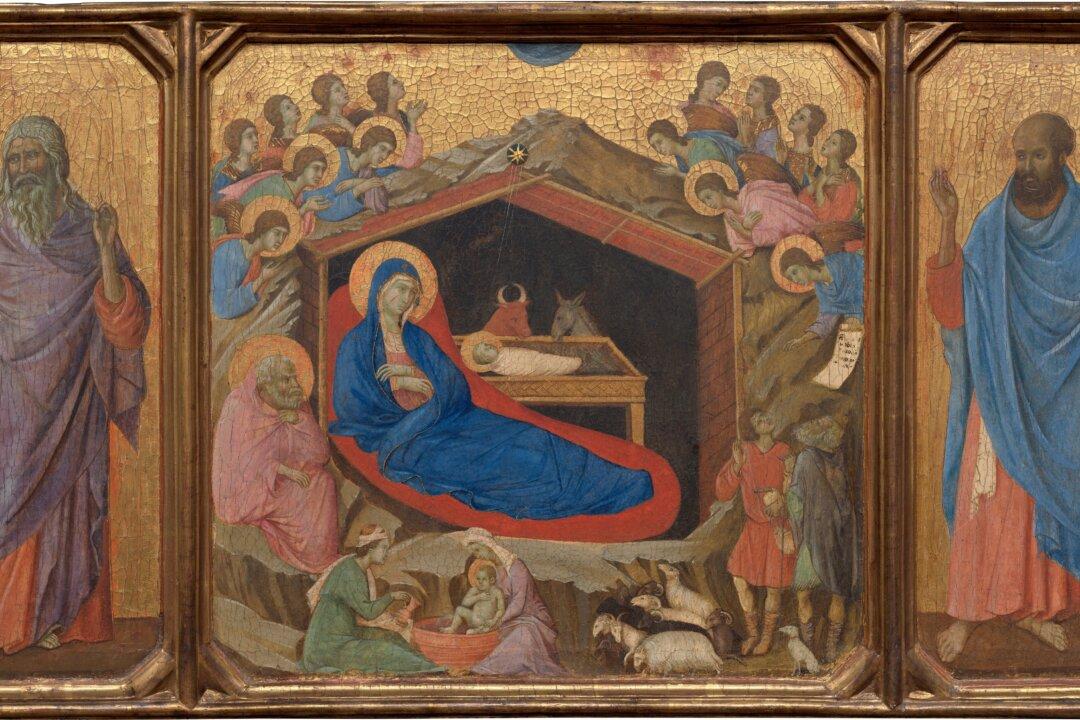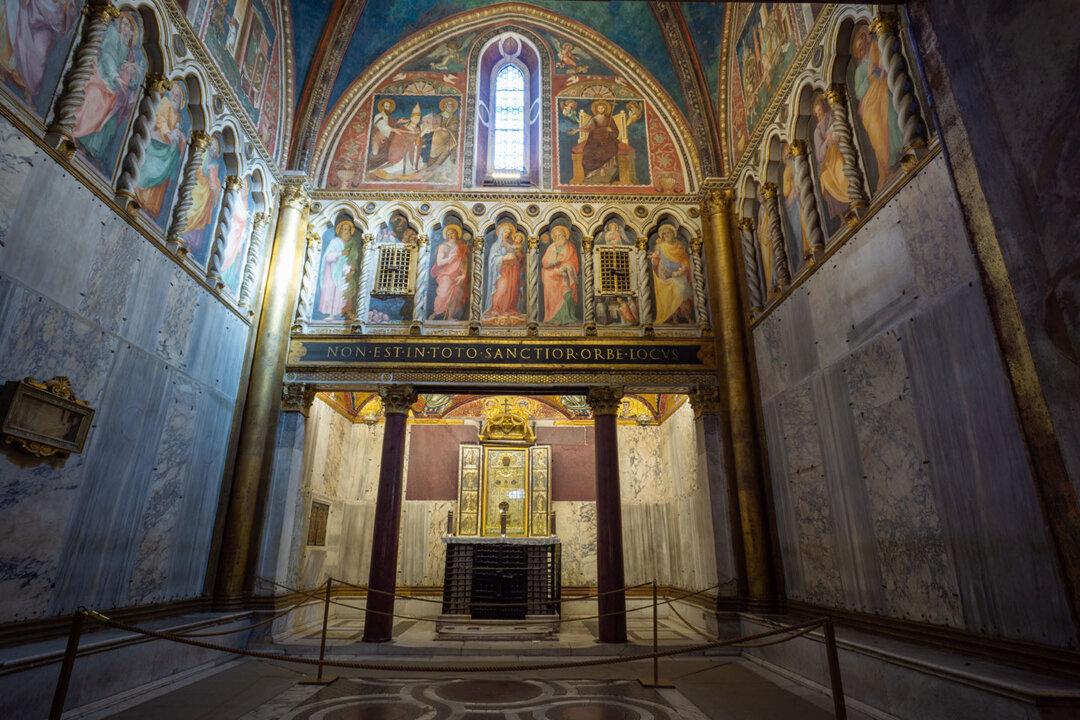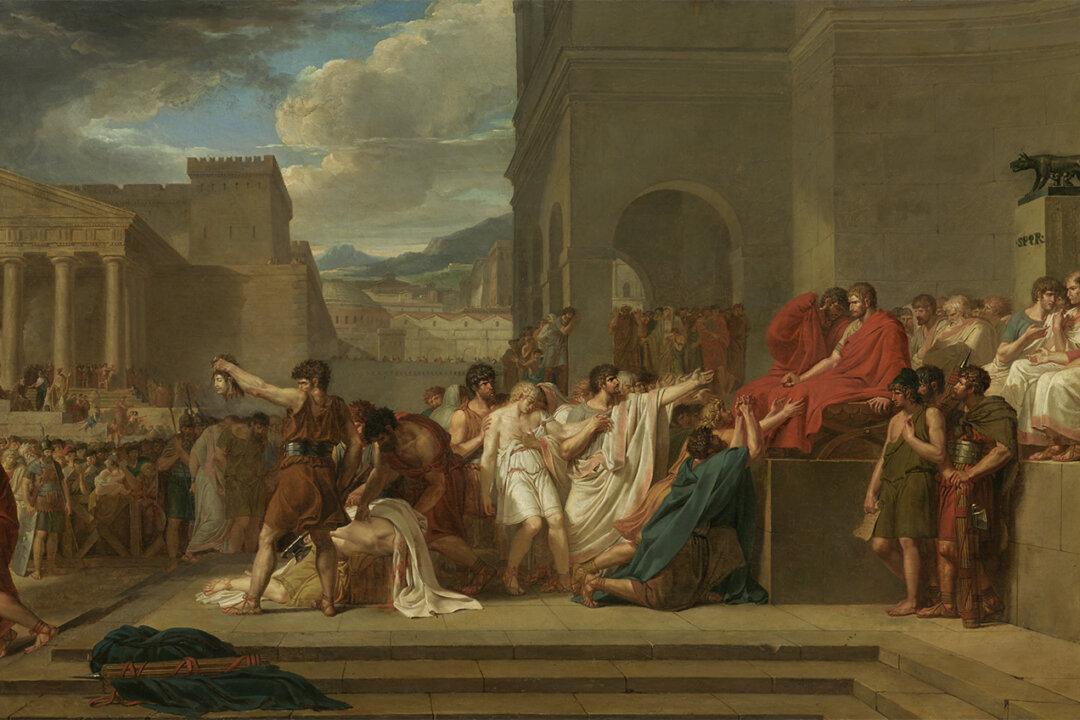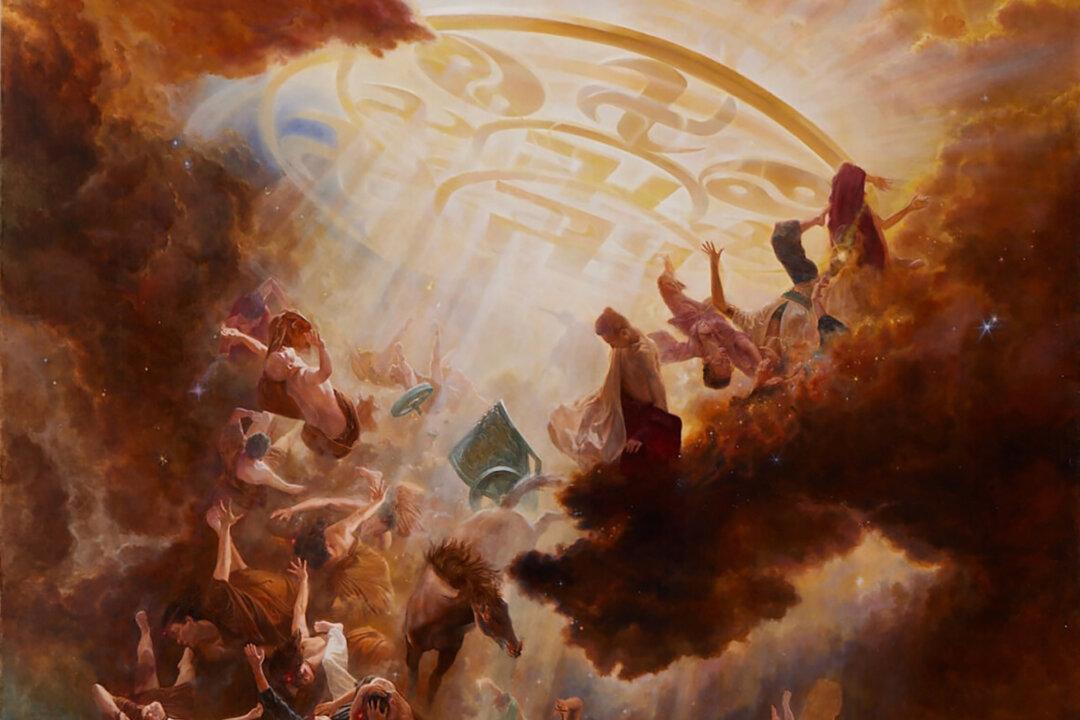From a pitch-dark background emerge the faces of a man and a woman, facing each other with hands folded in prayer. Their countenances appear austere, their clothing plain and simple. In fact, if it weren’t for the lady’s luxuriously jeweled necklace, the otherwise monochromatic painting might just escape our attention, lost amid the multifarious masterpieces in the Netherlandish galleries at the Metropolitan Museum of Art.
But upon closer inspection, this moderately sized double portrait yields much richer details, which betray the most refined taste of these sitters. The minute fibers along the edge of the lady’s garment and cuff hint at the high quality of the fur she wears, while the dark burgundy hue of the velvet gown exudes a subtle and subdued elegance. Similarly, the man is clad in a black velvet jacket with dark decorative patterns, barely visible today due to the discoloration of the oil paints. Indeed, these garments reflect the highest court fashion in 15th-century Bruges, where the couple had the panels made to commemorate their marriage.

